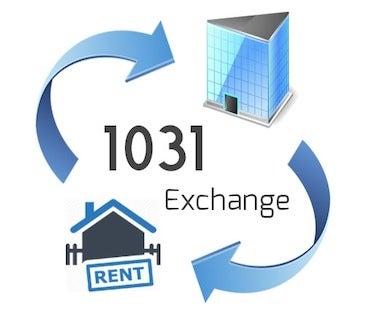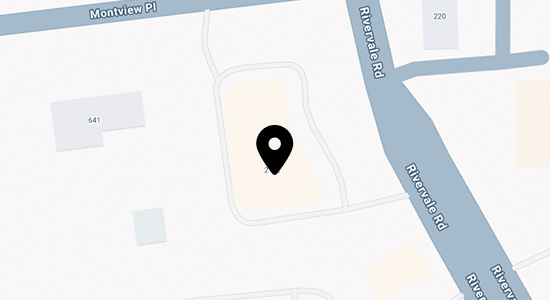- Contact Us Now: (201) 494-2800 Tap Here To Call Us
Understanding the Finer Points of a 1031 Exchange

Introduction:
In the realm of real estate investment, savvy investors are constantly seeking strategies to optimize their returns while minimizing tax liabilities. One such strategy that has garnered attention for its potential tax benefits is the 1031 exchange. Often touted as a powerful tool in the investor’s arsenal, the 1031 exchange allows for the deferral of capital gains taxes when swapping one investment property for another. However, navigating the complexities of a 1031 exchange requires a nuanced understanding of its finer points, including considerations such as depreciation recapture and exchanging with a mortgage.
Understanding the Basics of a 1031 Exchange:
Before delving into the intricacies, it’s essential to grasp the fundamentals of a 1031 exchange. At its core, a 1031 exchange, named after Section 1031 of the Internal Revenue Code, enables investors to defer paying capital gains taxes on the sale of investment property if they reinvest the proceeds into a similar, like-kind property. Unlike a typical real estate transaction where taxes are triggered upon sale, a 1031 exchange allows investors to defer those taxes indefinitely, thus preserving capital for further investment.
Depreciation Recapture:
When real estate is sold and subject to taxation, the taxpayer is obligated to pay ordinary income tax on the portion of straight-line depreciation claimed during ownership, up to the gain realized from the sale, capped at 25%. Essentially, the IRS recoups the tax advantage previously gained by the taxpayer. Any excess depreciation is recaptured at the relevant income tax rate, without the 25% limitation.
In a 1031 exchange, depreciation is recaptured to the extent the value of depreciable property acquired as replacement property is of a lesser value. What this means is that when utilizing a 1031 exchange, a taxpayer must acquire real property of equal or greater value to the property sold, and the property must also contain depreciable property (i.e. improvements) of equal or greater value to the depreciable property sold, in order to defer both capital gains and avoid depreciation recapture.
Taxpayers should recognize that although they can completely defer their capital gains by purchasing property of equal or higher value to what they sold, they might not defer all depreciation tax obligations. This occurs when the replacement property lacks a substantial value of depreciable assets. In essence, even if a taxpayer obtains like-kind property of equal or greater value through a 1031 exchange, depreciation recapture can still lead to tax liabilities.
Example: A taxpayer buys real estate for $500,000, which includes $250,000 worth of improvements. Later, they sell the property for $1,000,000 after claiming $250,000 in straight-line depreciation during ownership. The adjusted basis becomes $250,000 (purchase price minus depreciation). Total gains amount to $750,000 (sale price of $1M minus adjusted basis). Without an exchange, the $250,000 depreciation deductions are subject to a 25% tax rate (depreciation recapture), and the remaining $500,000 of gains would be taxed at the applicable capital gains rate. Opting for a 1031 exchange, the taxpayer obtains a replacement property valued at $1,000,000, albeit with only $150,000 of depreciable assets. Since the taxpayer exchanged into a property of equal value, no capital gains are recognized under Section 1031. However, there will be depreciation recapture on $100,000 because the replacement property has $100,000 less depreciable assets than the relinquished property.
One significant lesson from the aforementioned example is that even in a 1031 exchange, investors may encounter a taxable event, despite reinvesting all proceeds and upgrading in value, due to triggering depreciation recapture. This scenario often arises when a taxpayer swaps improved property for unimproved property lacking depreciable enhancements, such as vacant land. In such instances, the presence of depreciation recapture depends on the nature and quantity of depreciable assets within the relinquished property, as well as the extent and type of depreciation previously claimed. It is recommended that investors engage with their tax advisor early in the 1031 exchange planning process to assess their tax obligations and determine the necessary replacement property for deferring all gains, including both capital gains and depreciation.
Exchanging with a Mortgage:
Another consideration that adds complexity to a 1031 exchange is exchanging properties with existing mortgages. While it is entirely feasible to exchange a property with a mortgage, investors must be mindful of certain rules and limitations. The mortgage on the relinquished property must be replaced with equal or greater debt on the replacement property to fully defer taxes. If the debt is decreased or the investor receives cash in the exchange, it may trigger taxable gain to the extent of the decrease in debt or receipt of cash. Additionally, lenders may impose certain restrictions or requirements for assuming or obtaining new mortgages during a 1031 exchange, necessitating careful planning and coordination with financial institutions.
The Importance of Proper Planning and Professional Guidance:
Given the intricacies involved, engaging in a 1031 exchange demands planning and expert guidance. From identifying suitable replacement properties to navigating the myriad tax implications, investors must work closely with qualified intermediaries, tax advisors, and legal professionals to ensure compliance with IRS regulations and maximize the benefits of the exchange. Thorough due diligence, comprehensive financial analysis, and adherence to timelines are imperative to the success of a 1031 exchange.
Conclusion:
In the realm of real estate investment, a 1031 exchange stands out as a powerful strategy for deferring capital gains taxes and facilitating portfolio growth. However, the finer points of a 1031 exchange, including considerations such as depreciation recapture and exchanging with a mortgage, underscore the importance of informed decision-making and planning. By understanding these nuances and leveraging professional expertise, investors can unlock the full potential of a 1031 exchange and pave the way for continued success in their investment endeavors.
For expert guidance on property investment or executing a 1031 Exchange, do not hesitate to reach out to Joseph DiPiazza, Esq. and take the next step towards your financial goals.


